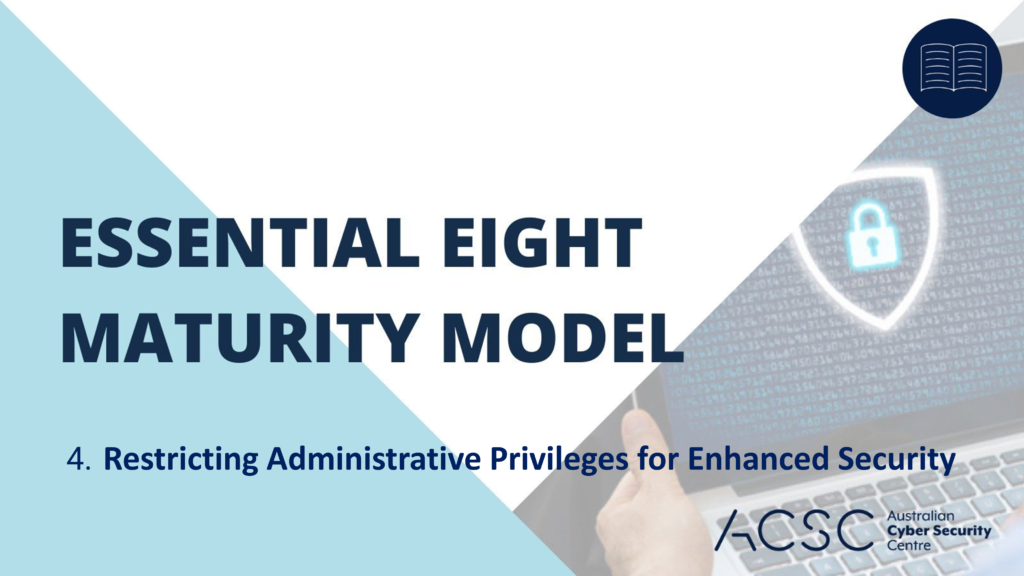Introduction: In the realm of cybersecurity, organizations need to adopt proactive measures to protect their systems and sensitive data. One critical strategy within the Australian Signals Directorate’s Essential Eight framework is restricting administrative privileges. In this article, we explore the concept of restricting administrative privileges, its significance in cybersecurity, and provide practical tips for its easy implementation.
What is Restricting Administrative Privileges? Restricting administrative privileges involves limiting the number of users and accounts with elevated access rights and administrative privileges within an organization’s network. It aims to minimize the potential damage caused by compromised accounts and unauthorized activities by ensuring that only authorized personnel have administrative control.
Why Implement Restricting Administrative Privileges? Implementing restricted administrative privileges offers several benefits, including:
- Mitigating Insider Threats: By limiting administrative privileges to only trusted individuals, organizations can reduce the risk of internal threats, such as unauthorized data access, tampering, or theft.
- Minimizing Lateral Movement: Restricting administrative privileges hinders the ability of malicious actors to move laterally within the network and escalate their access to critical systems and sensitive data.
Implementing Restricting Administrative Privileges Made Easy:
- Principle of Least Privilege: Follow the principle of least privilege by granting administrative privileges only to those individuals who require them to perform their job responsibilities effectively. Regularly review and adjust privileges based on the changing needs of personnel.
- Implement Role-Based Access Controls (RBAC): Utilize RBAC frameworks to assign privileges based on job roles and responsibilities. RBAC ensures that individuals are granted access rights commensurate with their specific job functions, minimizing the risk of unauthorized privilege escalation.
- Separate Administrative and User Accounts: Maintain a clear separation between administrative and user accounts. Administrative tasks should only be performed using designated administrative accounts, while everyday tasks should be carried out using standard user accounts.
- Strong Password Policies: Enforce strong password policies for administrative accounts, including the use of complex, unique, and regularly updated passwords. Implement multi-factor authentication (MFA) to add an extra layer of security to administrative account logins.
- Regular Account Reviews: Conduct regular reviews of administrative accounts to identify inactive or unnecessary accounts. Disable or remove such accounts promptly to prevent potential unauthorized access.
- Privilege Elevation Mechanisms: Implement secure privilege elevation mechanisms, such as just-in-time (JIT) privilege elevation or time-limited administrative access, to reduce the exposure of privileged accounts and minimize the risk of misuse.
- Logging and Monitoring: Enable logging and monitoring mechanisms to track and audit administrative activities. Regularly review logs to detect any suspicious or unauthorized activities and investigate them promptly.
- Employee Training and Awareness: Educate employees about the importance of restricting administrative privileges and the potential risks associated with granting unnecessary access rights. Raise awareness about the impact of insider threats and the role employees play in maintaining a secure environment.
Conclusion: Restricting administrative privileges is a critical component of the Essential Eight cybersecurity framework. By implementing restricted access rights and privileges, organizations can significantly reduce the potential risks posed by insider threats and unauthorized activities. Remember, combining restricted administrative privileges with other security measures and maintaining a proactive security posture is essential for comprehensive cybersecurity.
Disclaimer: This article is for informational purposes only and does not constitute professional cybersecurity advice. Organizations should conduct thorough assessments, consult with cybersecurity experts, and tailor their administrative privilege restrictions to their specific needs and environments.
